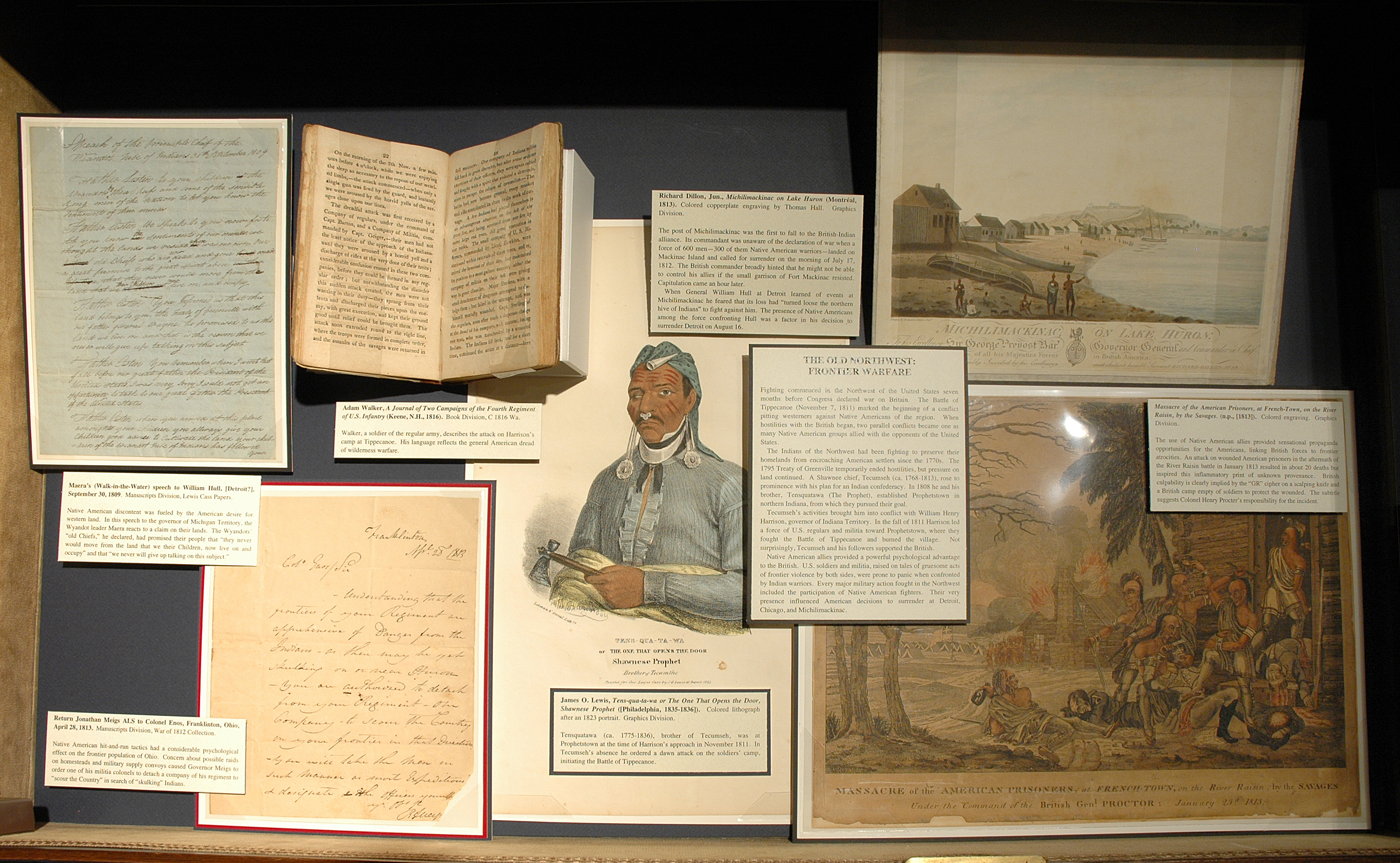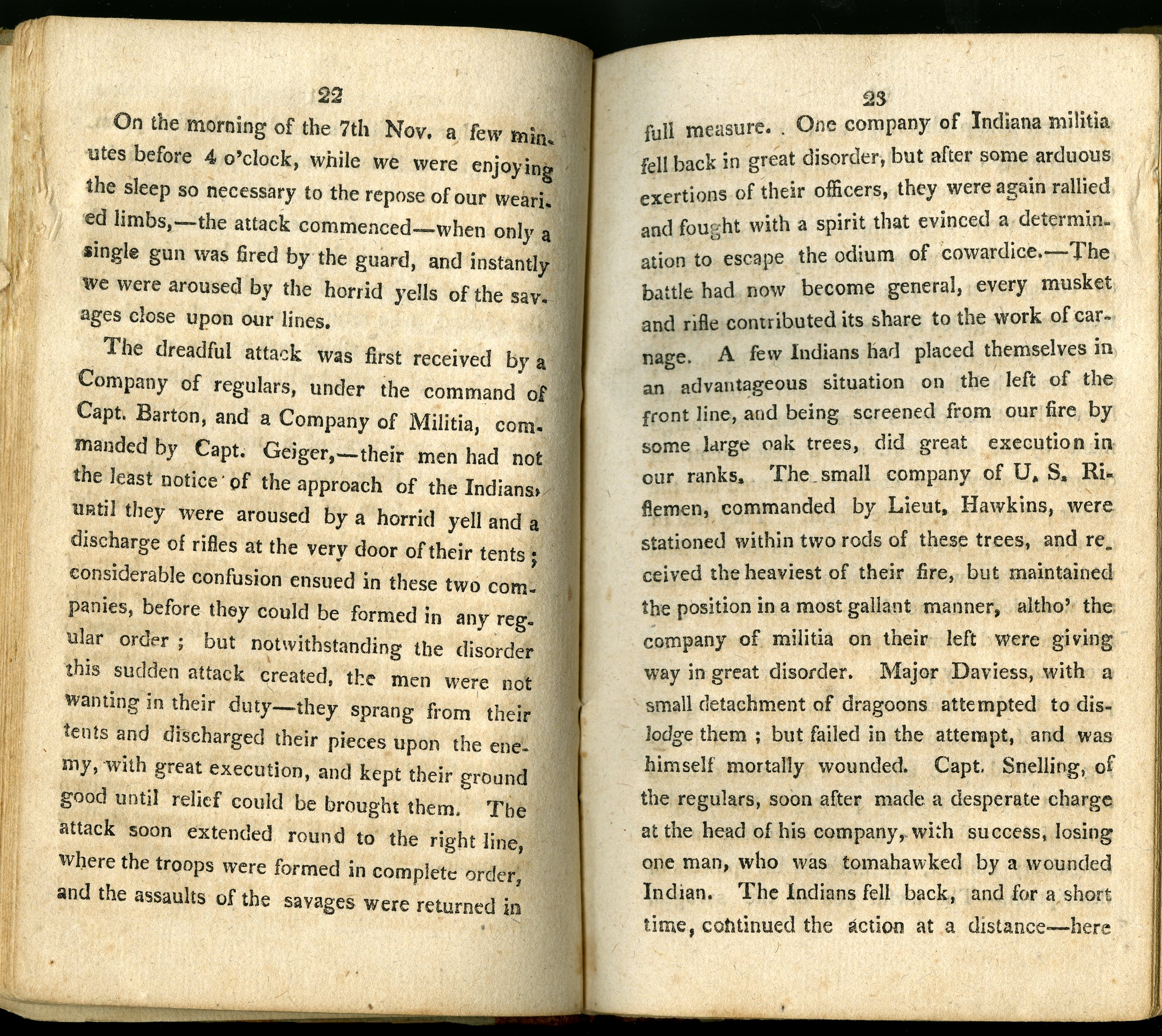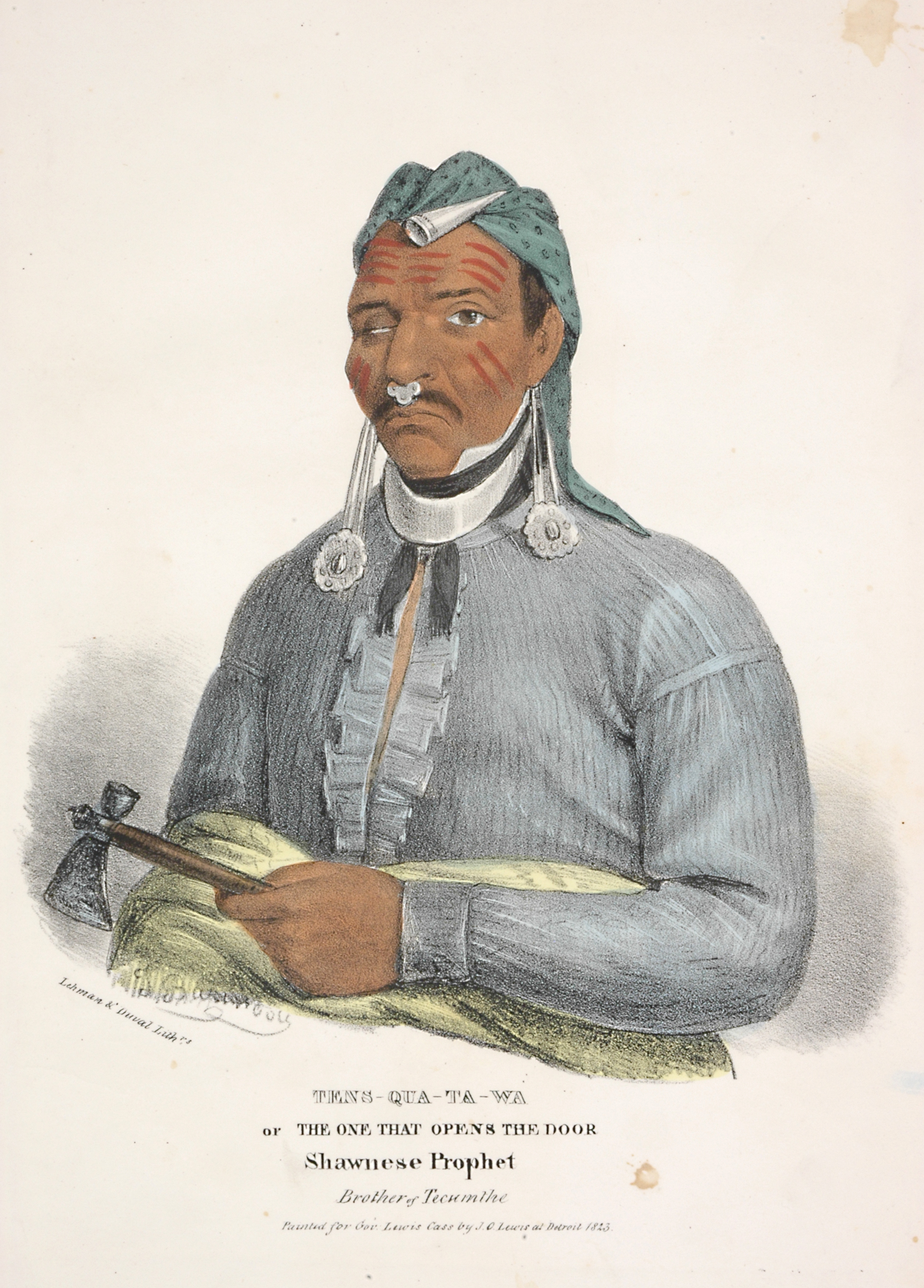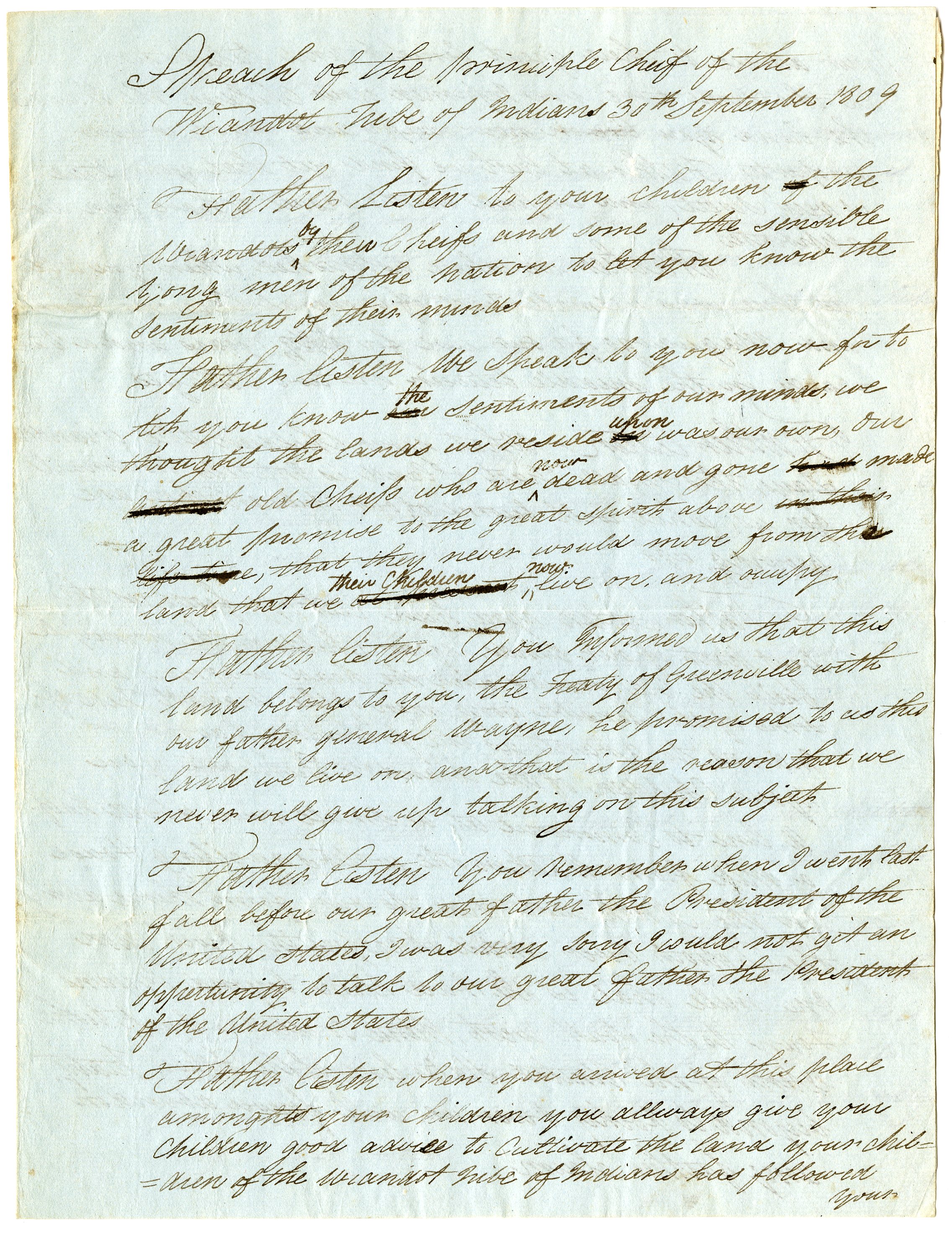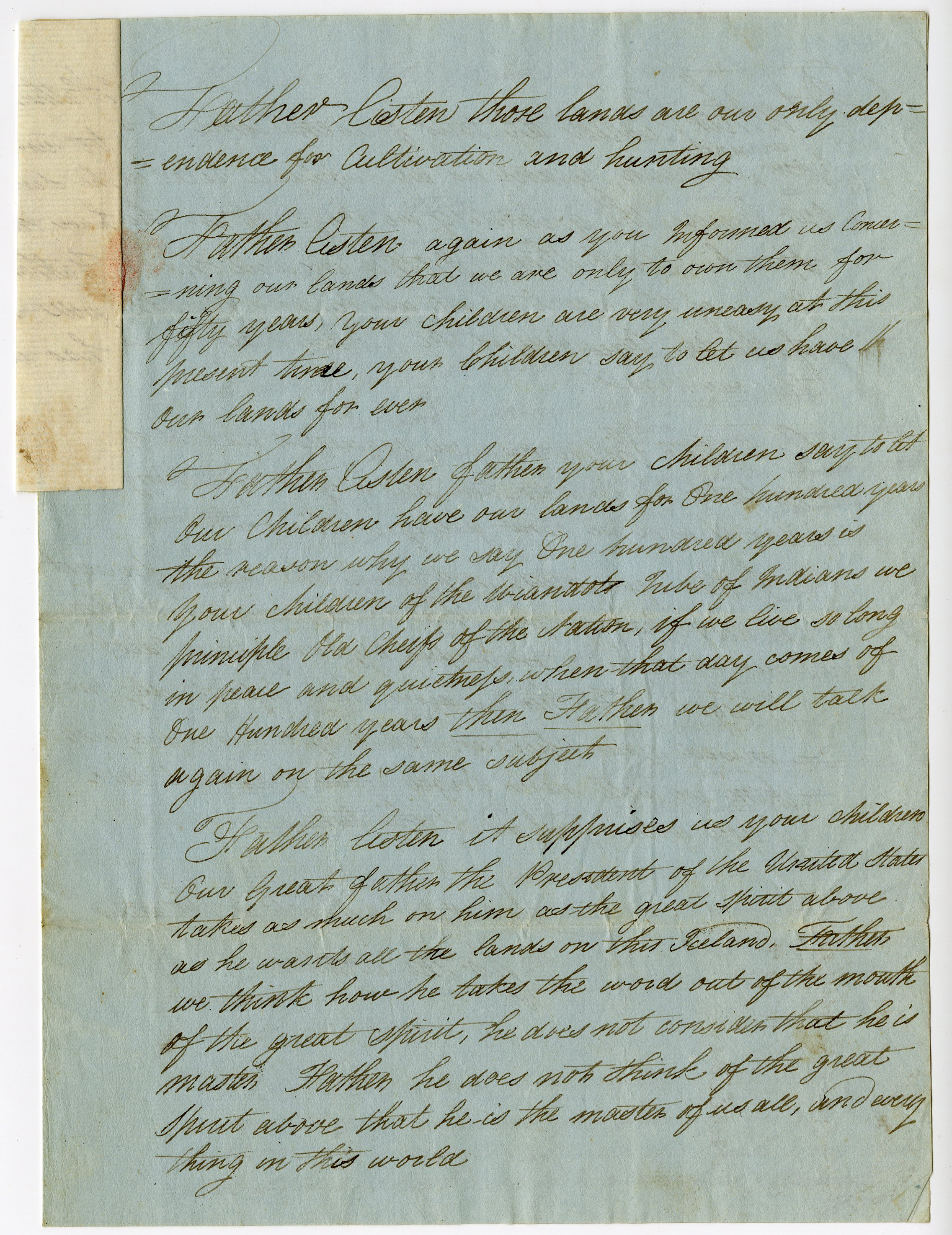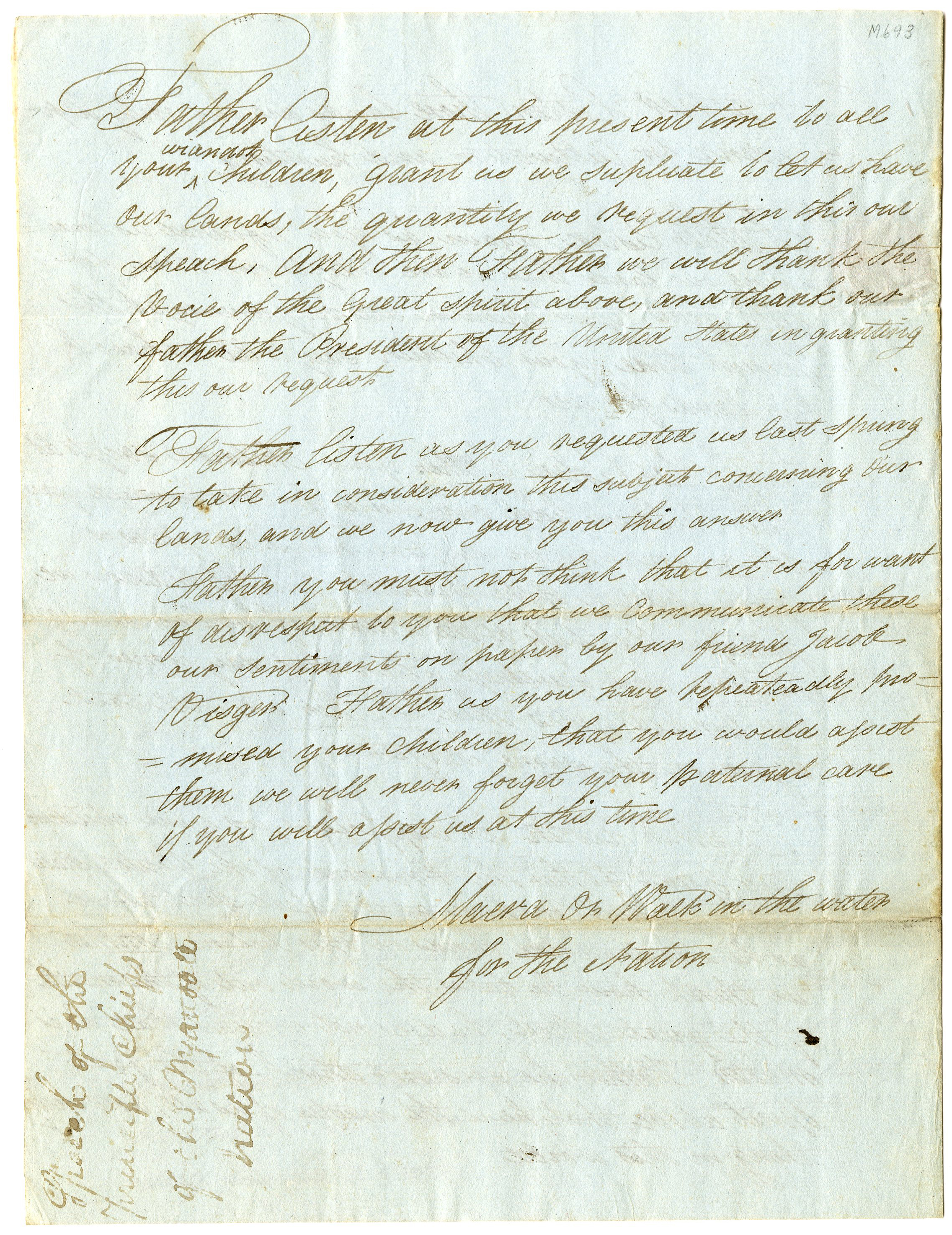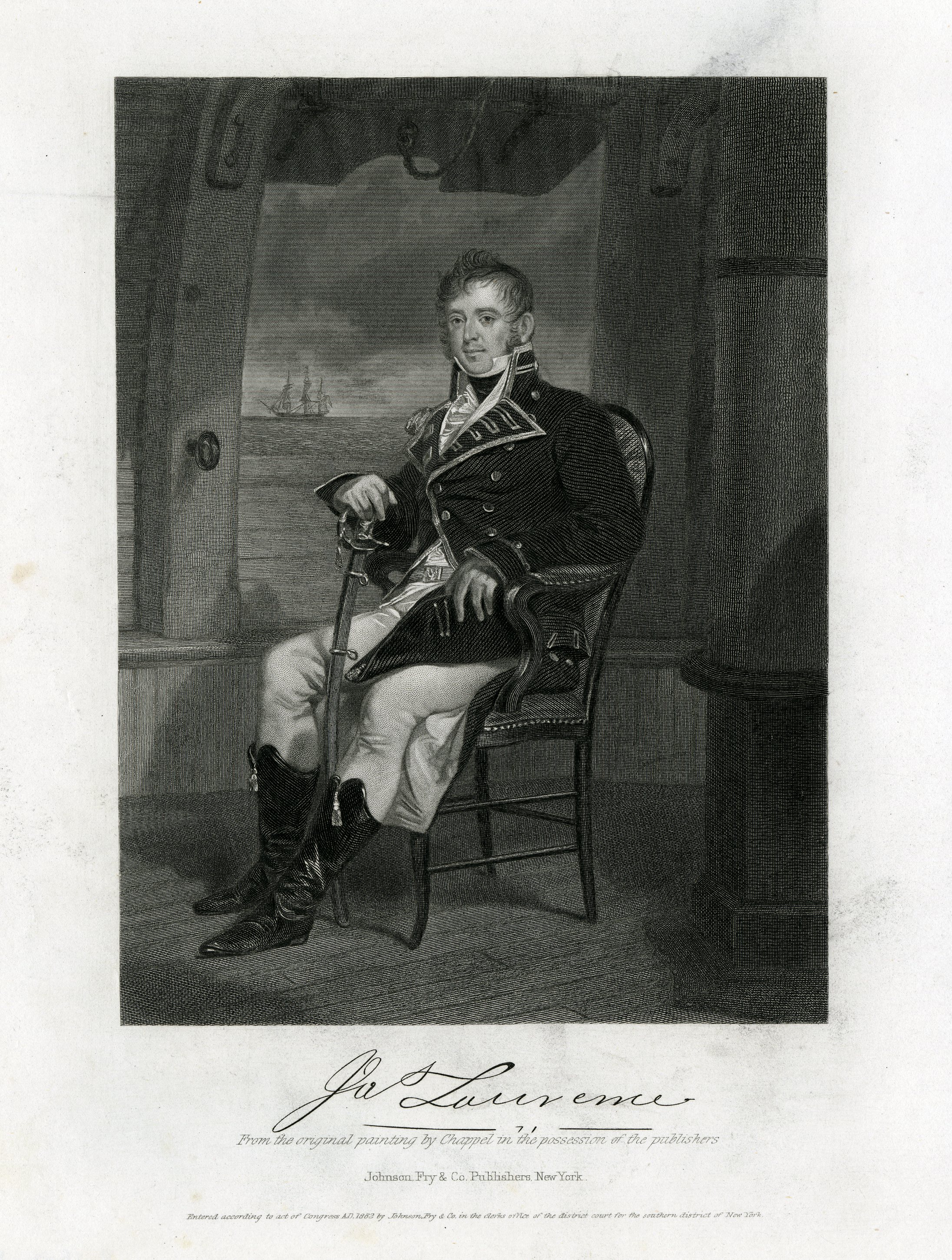The War of 1812: A Bicentennial Exhibition, Case 5
Case 5: The Old Northwest: Frontier Warfare
Fighting commenced in the Northwest of the United States seven months before Congress declared war on Britain. The Battle of Tippecanoe (November 7, 1811) marked the beginning of a conflict pitting westerners against Native Americans of the region. When hostilities with the British began, two parallel conflicts became one as many Native American groups allied with the opponents of the United States.
The Indians of the Northwest had been fighting to preserve their homelands from encroaching American settlers since the 1770s. The 1795 Treaty of Greenville temporarily ended hostilities, but pressure on land continued. A Shawnee chief, Tecumseh (ca. 1768-1813), rose to prominence with his plan for an Indian confederacy. In 1808 he and his brother, Tensquatawa (The Prophet), established Prophetstown in northern Indiana, from which they pursued their goal.
Tecumseh’s activities brought him into conflict with William Henry Harrison, governor of Indiana Territory. In the fall of 1811 Harrison led a force of U.S. regulars and militia toward Prophetstown, where they fought the Battle of Tippecanoe and burned the village. Not surprisingly, Tecumseh and his followers supported the British.
Native American allies provided a powerful psychological advantage to the British. U.S. soldiers and militia, raised on tales of gruesome acts of frontier violence by both sides, were prone to panic when confronted by Indian warriors. Every major military action fought in the Northwest included the participation of Native American fighters. Their very presence influenced American decisions to surrender at Detroit, Chicago, and Michilimackinac.
Adam Walker, A Journal of Two Campaigns of the Fourth Regiment of U.S. Infantry (Keene, N.H., 1816). Book Division, C 1816 Wa.
Walker, a soldier of the regular army, describes the attack on Harrison’s camp at Tippecanoe. His language reflects the general American dread of wilderness warfare.
James O. Lewis, Tens-qua-ta-wa or The One That Opens the Door, Shawnese Prophet ([Philadelphia, 1835-1836]). Colored lithograph after an 1823 portrait. Graphics Division.
Tensquatawa (ca. 1775-1836), brother of Tecumseh, was at Prophetstown at the time of Harrison’s approach in November 1811. In Tecumseh’s absence he ordered a dawn attack on the soldiers’ camp, initiating the Battle of Tippecanoe.
Richard Dillon, Jun., Michilimackinac on Lake Huron (Montréal, 1813). Colored copperplate engraving by Thomas Hall. Graphics Division.
The post of Michilimackinac was the first to fall to the British-Indian alliance. Its commandant was unaware of the declaration of war when a force of 600 men—300 of them Native American warriors—landed on Mackinac Island and called for surrender on the morning of July 17, 1812. The British commander broadly hinted that he might not be able to control his allies if the small garrison of Fort Mackinac resisted. Capitulation came an hour later.
When General William Hull at Detroit learned of events at Michilimackinac he feared that its loss had “turned loose the northern hive of Indians” to fight against him. The presence of Native Americans among the force confronting Hull was a factor in his decision to surrender Detroit on August 16.
Massacre of the American Prisoners, at French-Town, on the River Raisin, by the Savages. (n.p., [1813]). Colored engraving. Graphics Division.
The use of Native American allies provided sensational propaganda opportunities for the Americans, linking British forces to frontier atrocities. An attack on wounded American prisoners in the aftermath of the River Raisin battle in January 1813 resulted in about 20 deaths but inspired this inflammatory print of unknown provenance. British culpability is clearly implied by the “GR” cipher on a scalping knife and a British camp empty of soldiers to protect the wounded. The subtitle suggests Colonel Henry Procter’s responsibility for the incident.
Maera’s (Walk-in-the-Water) speech to William Hull, [Detroit?], September 30, 1809. Manuscripts Division, Lewis Cass Papers.
Native American discontent was fueled by the American desire for western land. In this speech to the governor of Michigan Territory, the Wyandot leader Maera reacts to a claim on their lands. The Wyandots’ “old Chiefs,” he declared, had promised their people that “they never would move from the land that we their Children, now live on and occupy” and that “we never will give up talking on this subject.”
Return Jonathan Meigs ALS to Colonel Enos, Franklinton, Ohio, April 28, 1813. Manuscripts Division, War of 1812 Collection.
Native American hit-and-run tactics had a considerable psychological effect on the frontier population of Ohio. Concern about possible raids on homesteads and military supply convoys caused Governor Meigs to order one of his militia colonels to detach a company of his regiment to “scour the Country” in search of “skulking” Indians.

